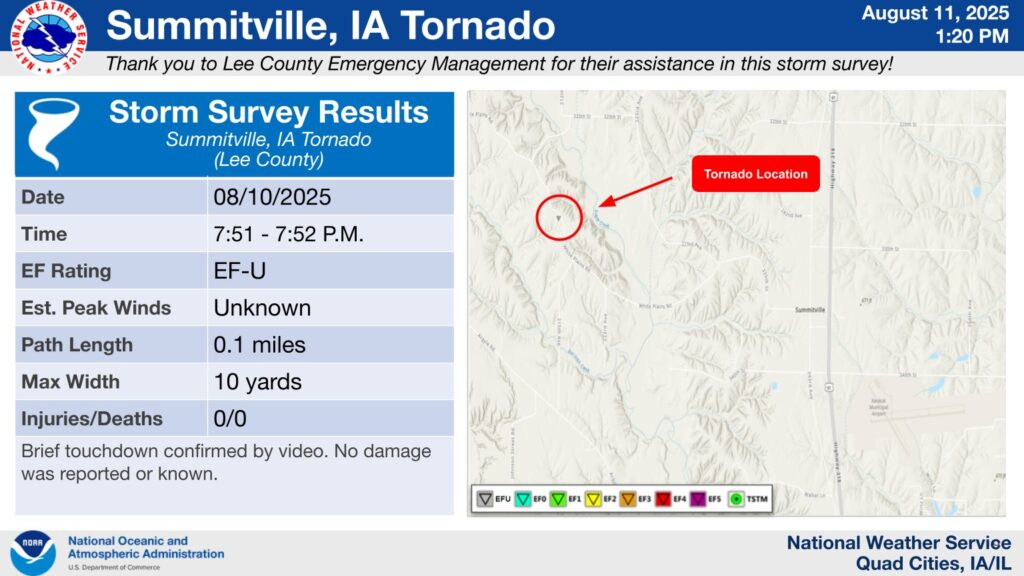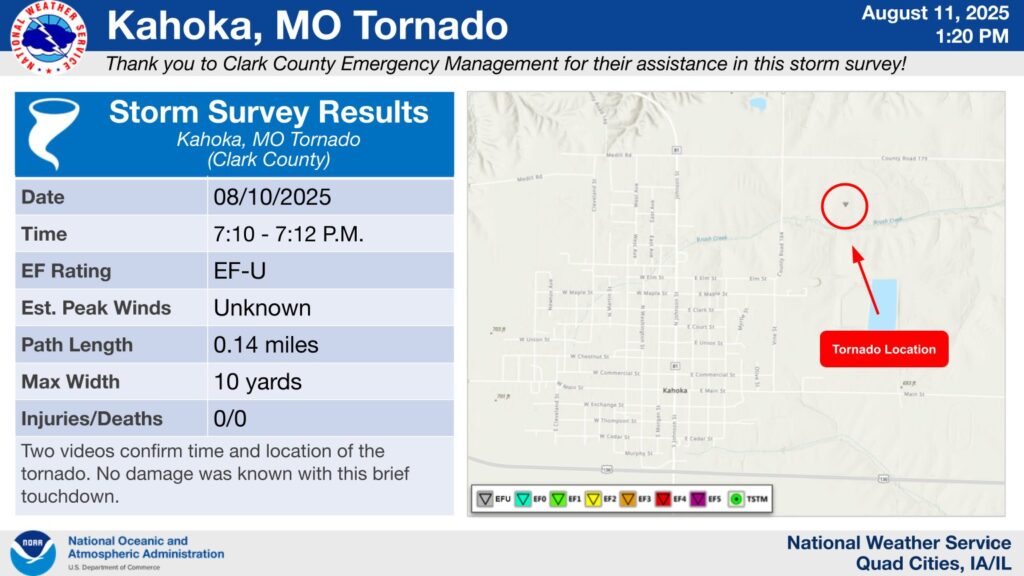Brief Tornadoes Verified in Iowa & Missouri Sunday Evening
The National Weather Service (NWS) in the Quad Cities has confirmed two brief tornado touchdowns from Sunday evening, August 10th, 2025, based on video evidence submitted by storm spotters and the public. While neither tornado caused known damage, they serve as a reminder that even short-lived tornadoes can occur in fast-moving summer storms.

Tornado #1 – Summitville, Iowa (Lee County)
- Time: 7:51 PM – 7:52 PM
- EF Rating: EF-Unknown
- Path Length: 0.10 miles
- Maximum Width: 10 yards
- Damage: None reported or known
- Confirmation: Brief touchdown confirmed by video evidence
The Summitville tornado occurred during a tornado warning issued at 7:36 PM for portions of Lee County, including the towns of Montrose and Summitville. The warning, prompted by radar-indicated rotation, remained in effect until 8:15 PM. Spotter video captured a brief, narrow funnel making contact with the ground before quickly dissipating.

Tornado #2 – Kahoka, Missouri (Clark County)
- Time: 7:10 PM – 7:12 PM
- EF Rating: EF-Unknown
- Path Length: 0.14 miles
- Maximum Width: 10 yards
- Damage: None known
- Confirmation: Two separate videos confirmed time and location
This tornado touched down briefly in Kahoka, just across the Iowa-Missouri border. Video evidence from two different vantage points confirmed the circulation’s contact with the ground before lifting a couple of minutes later. Like the Summitville tornado, no damage was reported.
What Does EF-Unknown Mean?
The Enhanced Fujita (EF) Scale is used to estimate a tornado’s wind speed based on the damage it causes. Ratings range from EF-0 (weakest) to EF-5 (strongest).
When a tornado is confirmed but no damage can be found or assessed, the National Weather Service assigns it an EF-Unknown rating. This does not mean the tornado was necessarily weak—it means there wasn’t enough physical evidence to accurately estimate its strength. This often happens with tornadoes over open fields, rural areas, or when they dissipate quickly before hitting structures or vegetation.
Both the Summitville and Kahoka tornadoes were small, short-lived, and caused no known damage. However, they highlight the importance of timely warnings, spotter reports, and public submissions of photos and videos. Even the smallest tornado can still pose risks, especially to anyone in its immediate path.
If you ever witness a tornado, ensure you are in a safe place first, and then consider reporting your observations to the National Weather Service to help meteorologists verify and document these events.